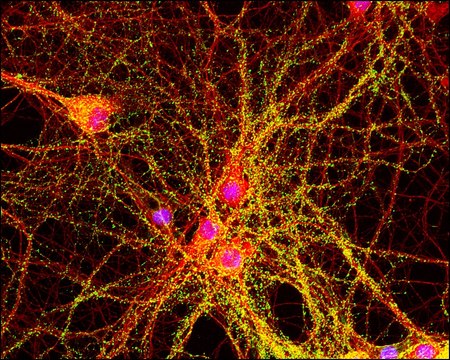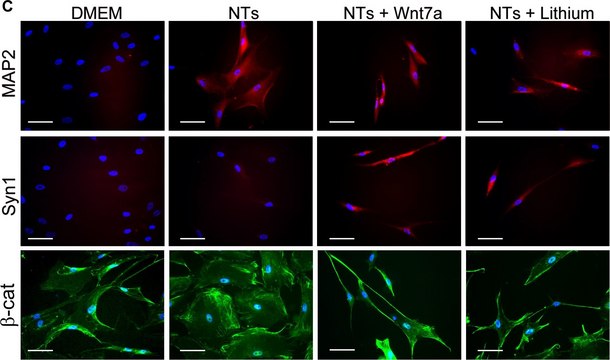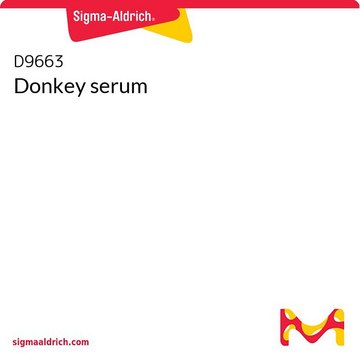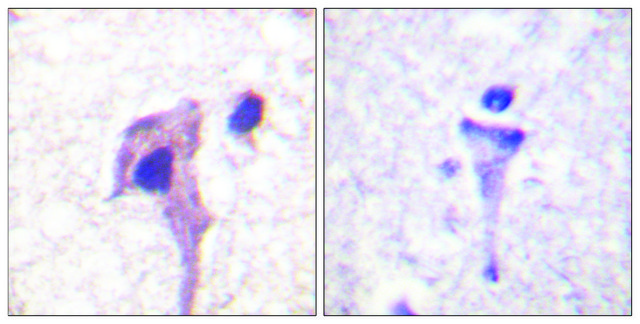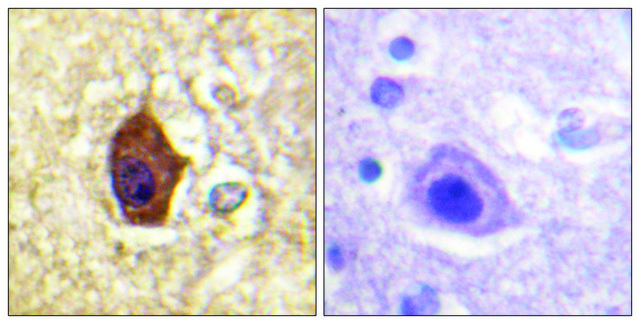MABN894
Anti-Synapsin-1 Antibody, clone 10.22
clone 10.22, from mouse
Synonyme(s) :
Synapsin I, Synapsin-1
Sélectionner une taille de conditionnement
507,00 $
Sélectionner une taille de conditionnement
About This Item
507,00 $
Produits recommandés
Source biologique
mouse
Niveau de qualité
Forme d'anticorps
purified antibody
Type de produit anticorps
primary antibodies
Clone
10.22, monoclonal
Espèces réactives
rat, mouse, human, fish, bovine
Technique(s)
immunofluorescence: suitable
immunohistochemistry: suitable (paraffin)
immunoprecipitation (IP): suitable
western blot: suitable
Isotype
IgG1
Numéro d'accès NCBI
Numéro d'accès UniProt
1 of 4
Cet article | AB1543P | SAB4502903 | SAB4502904 |
|---|---|---|---|
| antibody form purified antibody | antibody form affinity purified immunoglobulin | antibody form affinity isolated antibody | antibody form affinity isolated antibody |
| clone 10.22, monoclonal | clone polyclonal | clone polyclonal | clone polyclonal |
| Gene Information human ... SYN1(6853) | Gene Information human ... SYN1(6853) | Gene Information human ... SYN1(6853) | Gene Information human ... SYN1(6853) |
| biological source mouse | biological source rabbit | biological source rabbit | biological source rabbit |
| species reactivity rat, mouse, human, fish, bovine | species reactivity human, mouse, rat, bovine | species reactivity rat, human, mouse | species reactivity mouse, human, rat |
| isotype IgG1 | isotype - | isotype - | isotype - |
Description générale
Spécificité
Immunogène
Application
Western Blotting Analysis: A representative lot detected synapsin Ia/Ib in mouse cortical neuron lysates (Medrihan, L., et al. (2013). Nat. Commun. 4:1512).
Western Blotting Analysis: A representative lot detected purified bovine brain synapsin Ia/Ib (Messa, M., et al. (2010). J. Cell Sci. 123(13):2256-2265).
Western Blotting Analysis: A representative lot detected synapsin-1 in Torpedo (electric ray) synaptosomal preparations and in GST-cyclophilin B pull-downs (Lane-Guermonprez, L., et al. (2005). J. Neurochem. 93(6):1401-1411).
Western Blotting Analysis: A representative lot detected synapsin-1 in the same rat brain subcellular fractions as cyclophilin B (Lane-Guermonprez, L., et al. (2005). J. Neurochem. 93(6):1401-1411).
Western Blotting Analysis: A representative lot detected synapsin Ia/Ib, but not IIa/IIb, in rat brain post-nuclear supernatants (Vaccaro, P., et al. (1997). Brain Res. Mol. Brain Res. 52(1):1-16).
Immunoprecipitation Analysis: A representative lot immunoprecipitated synapsin Ia/Ib, but not IIa/IIb, from rat brain synaptosomal preparations using protein G beads with pre-bound rabbit anti-mouse IgG (Vaccaro, P., et al. (1997). Brain Res. Mol. Brain Res. 52(1):1-16).
Immunofluorescence Analysis: Clone 10.22 ascites fluid was employed to localize synapsin-1 immunoreactivity within retinal inner plexiform layer (IPL) of floating or whole-mount rat retinas (Mandell, J.W., et al. (1992). J. Neurosci. 12(5):1736-1749).
Note: Clone 10.22 does not bind significantly to protein G. For immunoprecipitation application, pre-coat protein G beads with an anti-mouse IgG antibody is recommended (Vaccaro, P., et al. (1997). Brain Res. Mol. Brain Res. 52(1):1-16).
Neuroscience
Developmental Neuroscience
Qualité
Western Blotting Analysis: 0.5 µg/mL of this antibody detected Synapsin-1 in 10 µg of rat brain cytosol tissue lysate.
Description de la cible
Forme physique
Stockage et stabilité
Autres remarques
Clause de non-responsabilité
Vous ne trouvez pas le bon produit ?
Essayez notre Outil de sélection de produits.
Code de la classe de stockage
12 - Non Combustible Liquids
Classe de danger pour l'eau (WGK)
WGK 1
Point d'éclair (°F)
Not applicable
Point d'éclair (°C)
Not applicable
Certificats d'analyse (COA)
Recherchez un Certificats d'analyse (COA) en saisissant le numéro de lot du produit. Les numéros de lot figurent sur l'étiquette du produit après les mots "Lot" ou "Batch".
Déjà en possession de ce produit ?
Retrouvez la documentation relative aux produits que vous avez récemment achetés dans la Bibliothèque de documents.
Notre équipe de scientifiques dispose d'une expérience dans tous les secteurs de la recherche, notamment en sciences de la vie, science des matériaux, synthèse chimique, chromatographie, analyse et dans de nombreux autres domaines..
Contacter notre Service technique